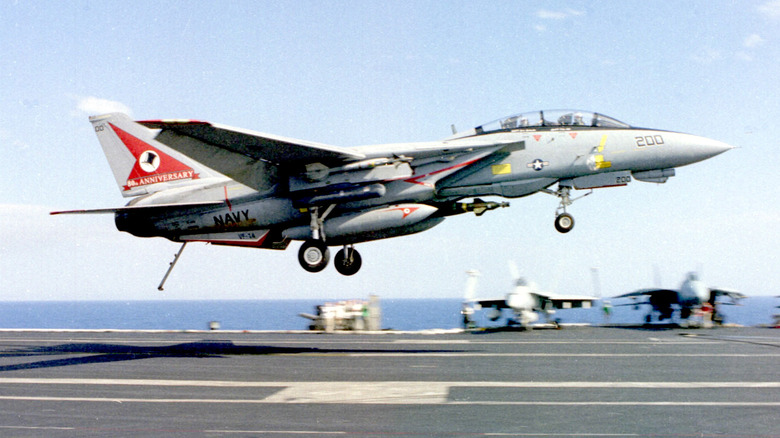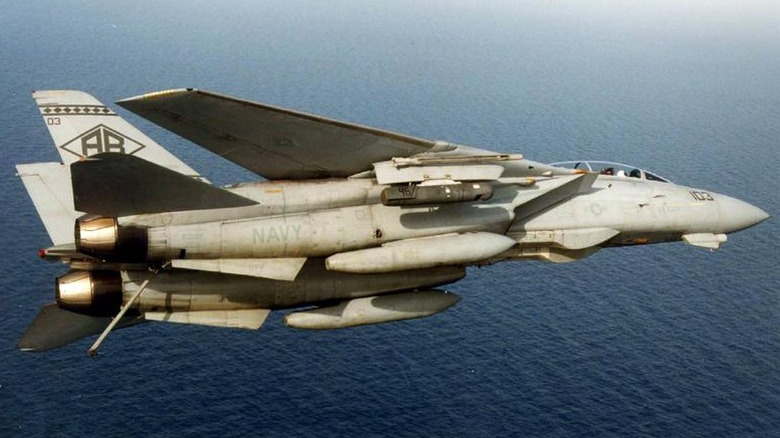Is The Grumman F-14 Tomcat Fighter Jet Still Flying Anywhere?
Utilized during the Cold War, the Grumman F-14 Tomcat was a reliable and highly effective defense fighter jet. Thanks to its weapons systems and variable-sweep wing design, the two-engine Tomcat had an unbeatable mix of speed and power, making it one of the most versatile planes in the U.S. Navy. But as of this writing, the F-14 is only being used for active operations by Iran.
Iran acquired its Tomcat fleet in the 1970s, after the United States sold 79 of them to then-Shah Mohammad Reza Pahlavi. Though the two countries were allies against the Soviet Union at the time, everything changed when Pahlavi was overthrown in 1979. The new Islamic Republic took possession of the F-14s and continued flying them through the years, even after being sanctioned by the U.S. Today, the Iranian Tomcats survive thanks to parts obtained on the black market, making them something of an outdated relic when compared to newer fighters.
Iran also flies other American fighters aside from the F-14, also acquired during the Shah's reign. Iran's fleet of U.S.-built fighters includes the F-4 Phantom, F-5E Freedom Fighter, and copies of the F-5. Iran also utilizes fighters from other countries as well, like the French Dassault Mirage F1 and the Chinese J-7/F-7. Much like the Tomcat, these jets are past their prime, yet Iran continues to use them as part of its regular fleet of fighters.
The F-14 was fast, fierce, and far too costly
The movie "Top Gun" popularized the Grumman F-14 Tomcat, but the famous fighter jet experienced a decline in the years that followed. By 2006, the Tomcat's time in the sky, at least for the U.S. Navy, came to an end. The F-14 was phased out to make room for more modern fighters that could handle the demands of the era.
One of those fighters was the F/A-18 Super Hornet, a new plane that carried out carrier operations more effectively and was easier to maintain. While the Super Hornet's Mach 1.6 top speed couldn't match the Tomcat's, it was a reliable replacement in a time when technology was leaving the F-14 behind. Safety problems with the Tomcat were also a concern, as it could experience a flight condition called flat spin, which caused the fighter to move downward while simultaneously losing forward speed. When that happened, pilot ejection was sometimes the only way out.
However, perhaps the biggest reason for the F-14's exit was its staggering cost. When the F-14 first took flight, the estimated price per plane was around $13 million. In two years, that number jumped to just under $17 million. Overall maintenance costs only added to that number, making the F-14 a very expensive fighter that the U.S. government eventually couldn't justify keeping in the air.

